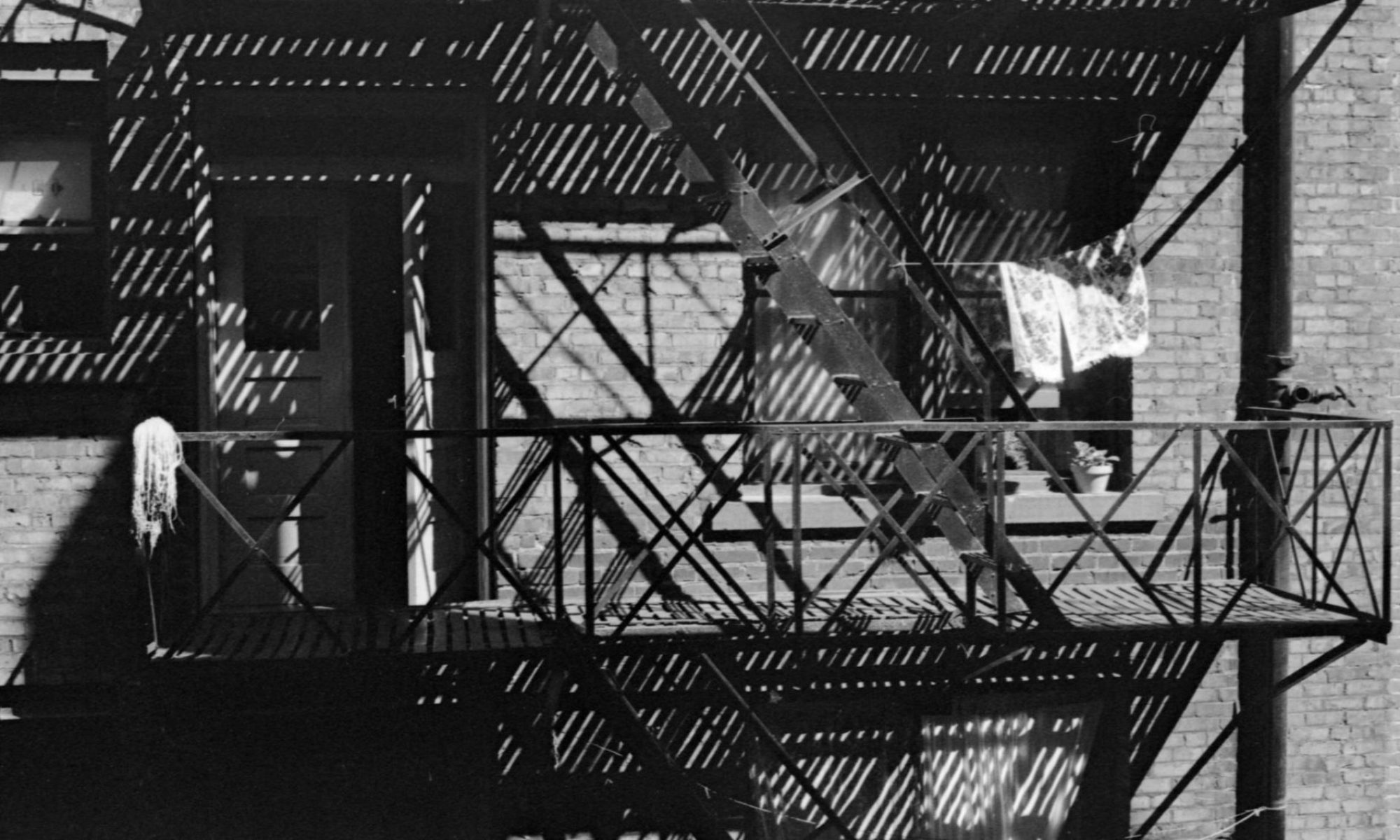As published in “Spacing Vancouver: Canadian Urbanism Uncovered“, August 2014
By Trevor Wideman and Aaron Franks
Stylized image of a Social Justice Zone presented at a Carnegie Community Action Project consultation meeting; used by permission of the artist, Karen Ward.
Describing Vancouver’s Downtown Eastside (DTES) as the city’s heart has consequences for the city planning and community organizing that will shape the area’s future for decades to come. The neighbourhood is often described by both its defenders and detractors as being central to the city, geographically and otherwise. It’s been called “a resilient community with heart” and “the heart of the city”, and simultaneously “an epicentre of human dysfunction,”[1] calling to mind Vancouver’s bowel or liver – the urban equivalent of the grease trap for wastes and toxins.
Language like this is also increasingly being used to refer to the area known as the Downtown Eastside/Oppenheimer District, or DEOD, which has become a sort of “ground zero” in the fight between developer interests and social justice advocates. With rapid change happening in such a concentrated space, it is important to reflect on the potential impacts of red circling city spaces as ‘hearts’. While the heart image is urgent, emotional and implies that the area is critical for sustaining the city, the use of such imagery without looking at the intent behind it can create the impression that the community is little more than a space of crisis, on life support and in need of a transplant. Consequently, this can cause segregation, either by signalling spaces of emergency that require immediate change, or by building walls that alienate the community and its struggles from the rest of the city.
There is little doubt that the DTES plays an important and central role as a current and historic centre of Vancouver. The area, located on the unceded territories of the Musqueam, Squamish and Tsleil-Waututh nations, has historically provided affordable lodging for resource and transportation workers and enabled immigrants since the 19th century to form networks of mutual support. However, generic stories about the community are now being used to re-brand the area, re-writing its important economic and social history while erasing the value of its current residents. At the centre of this generalization is the city’s recent Local Area Planning Process (LAPP), which has promoted a generic ‘heart’ image of the DTES to erase alternative ways of thinking about community, housing, and residents’ right to remain.[2]
In May 2013, the Carnegie Community Action Project (CCAP) proposed that the Downtown Eastside/Oppenheimer District be re-imagined as a “Social Justice Zone” where community assets and social housing could be maintained at the exclusion of market rate development.[3] Here, as seen in the headline image above, a community heart was presented in the form of a stylized map that affirmed the importance of the DEOD as a space of support for people who have nowhere else to turn.
Clearly the “Social Justice Zone” shows how meaningful the heart image is to the low-income community and their advocates. Fittingly, ‘the heart’ of the Downtown Eastside also leaps off the pages of the new Local Area Plan (LAP), which outlines what will happen in the neighbourhood over the next 30 years.
The Downtown Eastside Oppenheimer District becomes a Community Based Development Area; City of Vancouver, 2014.
While many have criticized the LAP as a dispersal plan[4] that simply enforces the municipal government’s idea of what is appropriate in the DTES, in reality the process was more tactical, with city planners engaging the public in a series of committee meetings, round table sessions, and workshops over almost two years. During that time, community input was used within the limits of what was deemed reasonable (with much of this input being confined to the ‘narrative sections’ of the plan), then reproduced in a way that fit with a free market agenda.
This is apparent when you look at how the city and community residents both used the idea of ‘community heart’ during the planning process, to show how particular places (for example, the Carnegie Community Centre, or Oppenheimer Park) were important to the neighbourhood.
But only one version of ‘importance’ came out on top.
“Community Hearts” mapped in the “Our Places” planning workshop, August, 2012; City of Vancouver, 2014.
While the Local Area Planning Process could have been an important way of reflecting and respecting the historical and contemporary importance of the DTES as the heart of the economic and social diversity of the city, instead one unified ‘heart shaped’ story of the DTES emerged to justify a singularly market-friendly re-scripting of the heart’s purpose. Take, for example, the city’s creation of a “Community Based Development Area” (CBDA, complete with extra-thick dotted red line) in the Local Area Plan [see image above]. Within, the area has many “critical assets” and is a “key area supporting [the] low-income community.”
Community map gets transformed in the draft Local Area Plan; City of Vancouver, 2014.
Such ideas are also reinforced by the map of “community hearts” created by participants during the LAP “Our Places” community mapping workshop in August 2012 [see images above]. This map was eventually transformed into a more general map for the final draft, and notably, many of the special places that were identified became contained within the CBDA. So far so good: these visions don’t sound incompatible with CCAP’s “social justice zone” located in the DEOD. But according to the plan, the Downtown Eastside/Oppenheimer District – which occupies the same space as the Community Based Development Area – is also destined to be a “rental housing district” requiring “Revitalization of Japantown & Aboriginal heritage” instead of a 100% social housing zone. Though they have different goals, the low income community’s vision and the City’s plans for market housing can both claim to be protecting the heart of the city.
How can one document affirm two different visions for the same space? In reality, it doesn’t. It merely uses one ‘heart’ to serve the other, with a vision presented by the community used to reinforce a for-profit vision of what should happen. Both activists and the City have embraced the DEOD as a heart requiring special attention, yet they are marking this space for very different reasons – one to protect people’s right to remain in their homes, and the other to prime the real estate market.
Does the heartening of Vancouver’s Downtown Eastside make it stronger?
Hearts may be a powerful source of strength, but they can also be a target. Many interventions can be justified as life-saving, but for those concerned about the rights of low-income and vulnerable people in the DTES, it is more important than ever that the story of Vancouver’s heart be distanced from those used by planners, the city, and the mainstream media.
Furthermore, by continuing to represent the DTES, and in particular the DEOD, as the heart of the struggle for housing and rights in Vancouver, there is a risk that similar instances of displacement and change in other parts of the city will be glossed over, losing opportunities to build coalitions. The ‘problems’ of the DTES are not entirely unique, they are reflected in the city at large and in wider society as well. It is up to those working for positive change in these many different locations to find common ground from which a more equitable city can be built.
***
REFERENCES
[1]http://www.theglobeandmail.com/globe-debate/the-fall-of-the-poverty-entrepreneurs/article17655660/?cmpid=rss1
[2] http://www.revitalizingjapantown.ca/r2r/
[3]http://ccapvancouver.wordpress.com/2013/05/01/sjz/
[4]http://themainlander.com/2014/03/17/downtown-eastside-dispersal-plan-approved-by-vancouver-city-council
**
Trevor Wideman is an MA student in Geography at Queen’s University, and Research Assistant with the Centre for Environmental Health Equity. He currently lives, works and studies in Vancouver.
Aaron Franks is the “Revitalizing Japantown?” project coordinator and a Postdoctoral Research Associate with the Centre for Environmental Health Equity in Geography and Kinesiology and Health Studies at Queen’s University. He currently lives in Kingston.





